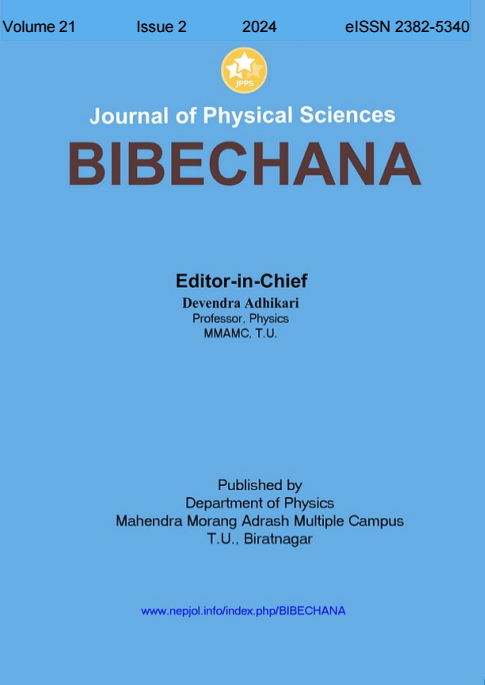Radiation level over the Bishnumati River Bridges: A Study from Balaju to Teku in Kathmandu, Nepal
DOI:
https://doi.org/10.3126/bibechana.v21i2.61268Keywords:
Geiger counter, exposure, annual effective dose (AED), Background radiationAbstract
Background radiation is ubiquitous; it is obvious to be present on the bridges too. Furthermore, the bridges of the Bishnumati River lie near solid waste collection centers, garages, and some important religious sites like Shovabhagwati, Indrayani, Kankeswori, etc. The level of radiation exposure of 14 different bridges on the Bishnumati River from Balaju to Teku is measured using a professional Digital Geiger Counter GCA-07W. The 14 bridges consisting: of vehicle, bailey, and semi-suspension bridges are surveyed. It is found that the Shovabhagwati bridge has the highest annual effective dose rate of 1.025 ± 0.230 mSv/yr while the Nilbarahi bridge has the lowest annual effective dose rate of 0.696 ± 0.237 mSv/yr. The vehicle-cemented bridge has higher background radiation due to the material that is used in construction i.e., cement, iron rod, and other chemical. The average annual effective dose is 0.906 ± 0.230 mSv/yr which lies below the recommended dose by the International Commission on Radiological Protection (ICRP). No harmful radiation is found between Balaju to Teku, the bridge over the Bishnumati River, Kathmandu, Nepal.
Downloads
Downloads
Published
How to Cite
Issue
Section
License
Copyright (c) 2024 The Author(s)

This work is licensed under a Creative Commons Attribution-NonCommercial 4.0 International License.
This license enables reusers to distribute, remix, adapt, and build upon the material in any medium or format for noncommercial purposes only, and only so long as attribution is given to the creator.




